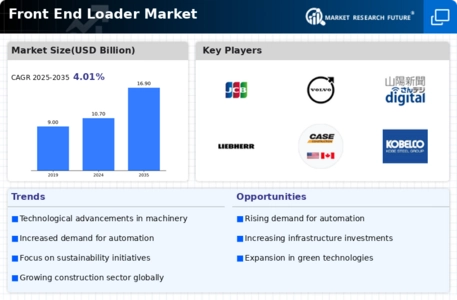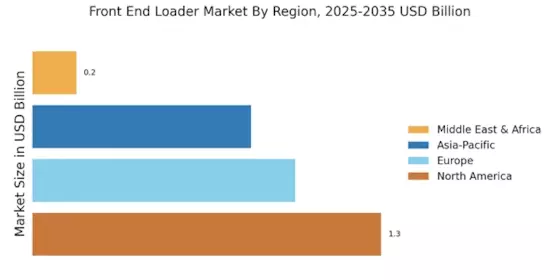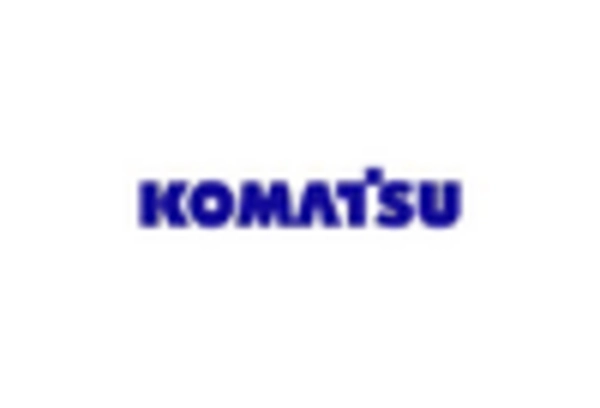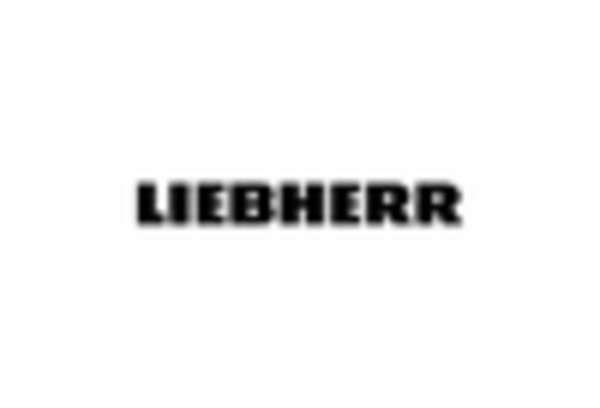Technological Innovations
Technological innovations are transforming the Front End Loader Market, as manufacturers integrate advanced features into their equipment. Innovations such as telematics, automation, and improved fuel efficiency are becoming increasingly common. These advancements not only enhance the performance of front end loaders but also contribute to reduced operational costs. The market for construction equipment, including front end loaders, is expected to grow by approximately 5% annually, driven by these technological advancements. As companies prioritize efficiency and sustainability, the demand for modernized front end loaders is likely to increase, further propelling the Front End Loader Market forward.
Agricultural Mechanization
The shift towards agricultural mechanization is another significant driver influencing the Front End Loader Market. As farmers seek to enhance productivity and efficiency, the adoption of advanced machinery, including front end loaders, is becoming more prevalent. The agricultural sector is expected to witness a growth rate of around 4% annually, driven by the need for improved crop yields and reduced labor costs. Front end loaders facilitate various tasks such as loading, transporting, and unloading materials, making them indispensable in modern farming operations. This trend suggests that the Front End Loader Market will likely experience increased demand as agricultural practices evolve and mechanization becomes more widespread.
Infrastructure Development
The ongoing expansion of infrastructure projects appears to be a primary driver for the Front End Loader Market. Governments and private sectors are investing heavily in the construction of roads, bridges, and urban developments. This trend is likely to increase the demand for front end loaders, which are essential for material handling and earthmoving tasks. According to recent data, the construction sector is projected to grow at a compound annual growth rate of approximately 5.5% over the next few years. This growth could lead to a heightened need for efficient machinery, thereby bolstering the Front End Loader Market. Furthermore, as urbanization continues to rise, the requirement for robust equipment to support these developments becomes increasingly critical.
Mining and Resource Extraction
The mining and resource extraction sectors are poised to significantly impact the Front End Loader Market. As the demand for minerals and natural resources continues to rise, mining operations are expanding, necessitating the use of heavy machinery. Front end loaders play a crucial role in these operations, providing efficient material handling capabilities. Recent statistics indicate that the mining industry is projected to grow at a rate of approximately 6% per year, driven by the increasing need for raw materials in various industries. This growth could lead to a surge in demand for front end loaders, as companies seek to optimize their operations and enhance productivity in the resource extraction process.
Rising Demand for Rental Equipment
The rising demand for rental equipment is emerging as a notable driver in the Front End Loader Market. Many construction and agricultural businesses are opting to rent rather than purchase machinery, seeking to minimize capital expenditures and maintenance costs. This trend is particularly pronounced in regions experiencing rapid development, where companies require access to heavy machinery without the long-term commitment of ownership. The rental market for construction equipment is projected to grow at a rate of around 7% annually, indicating a shift in how businesses approach equipment acquisition. This shift could lead to increased utilization of front end loaders, thereby positively impacting the Front End Loader Market.


















Leave a Comment